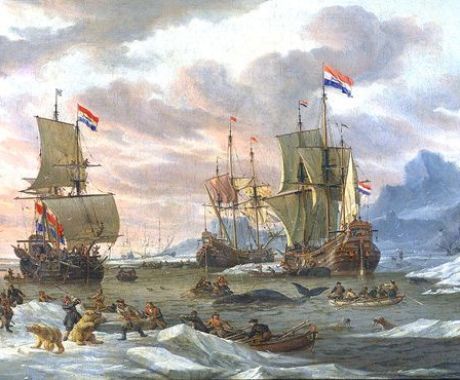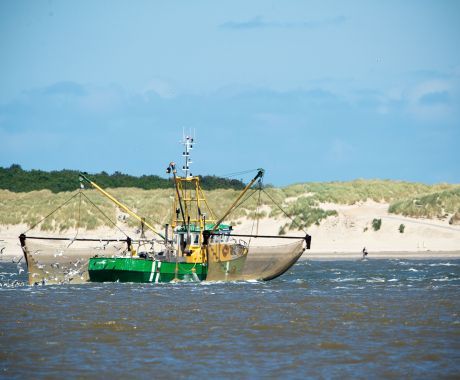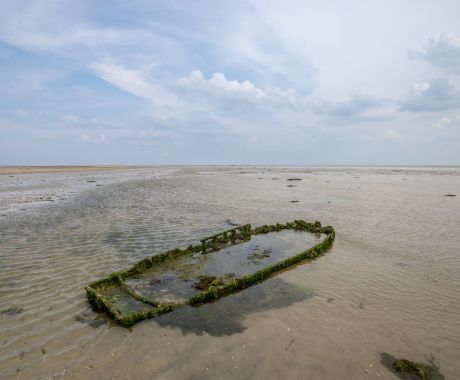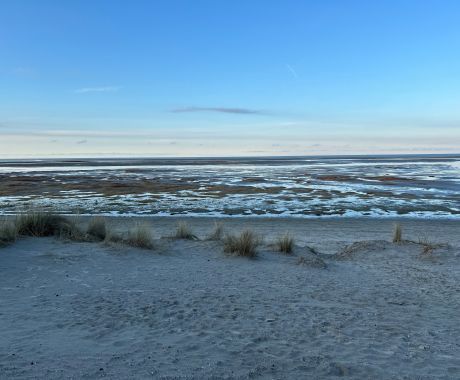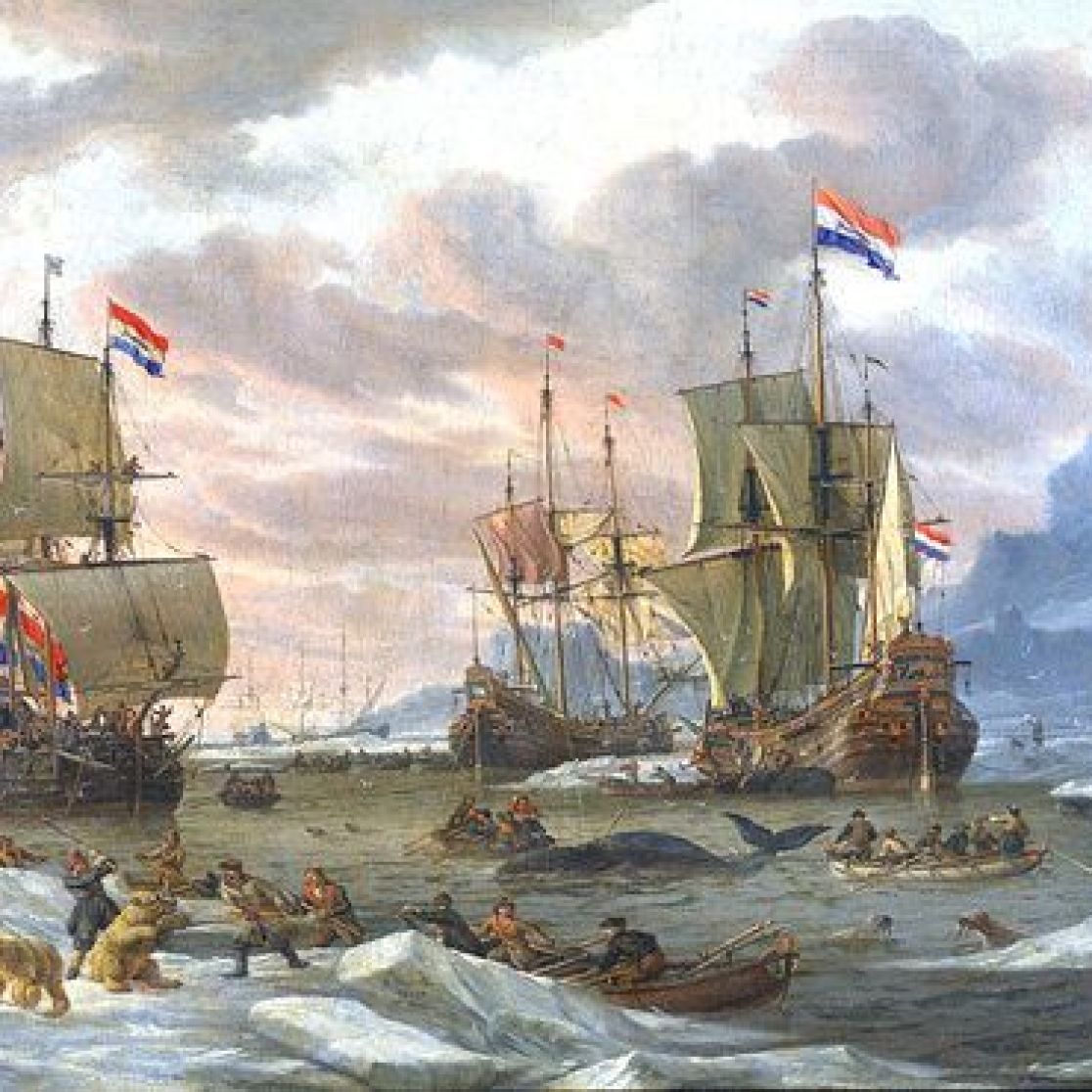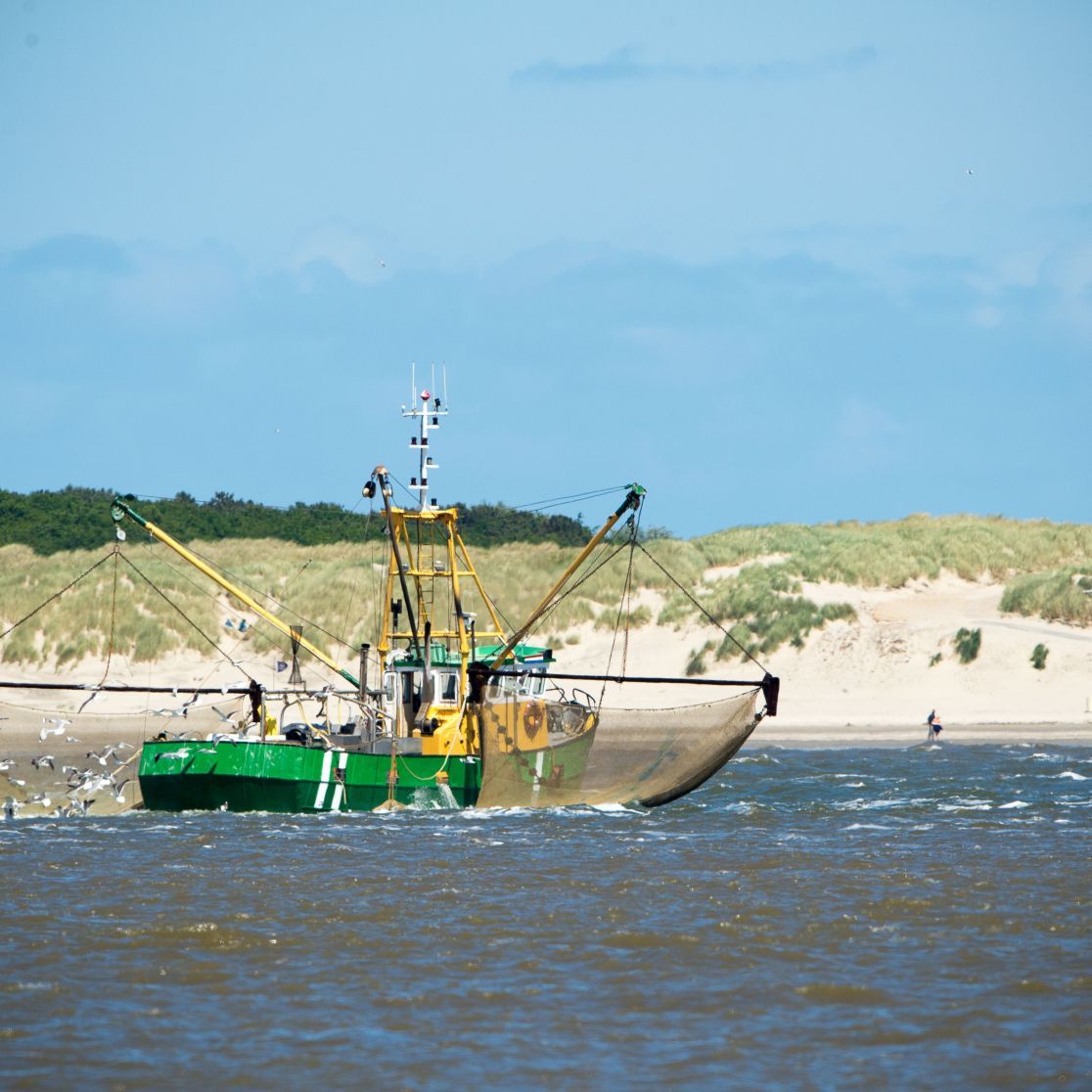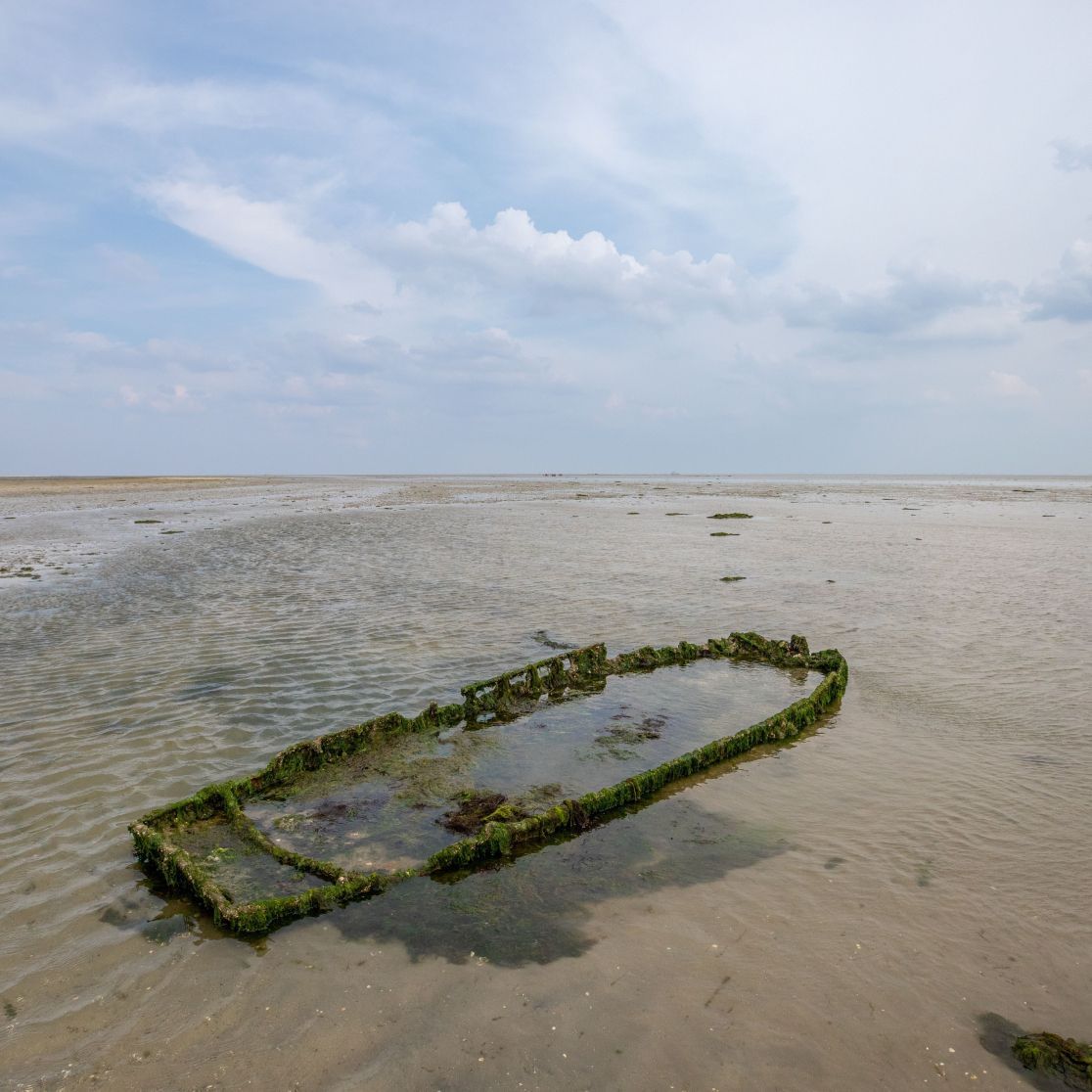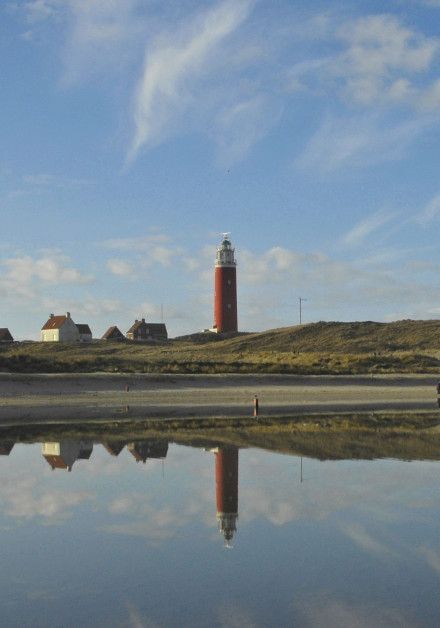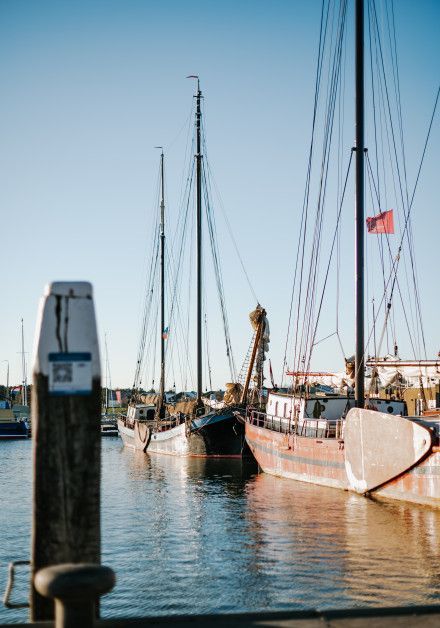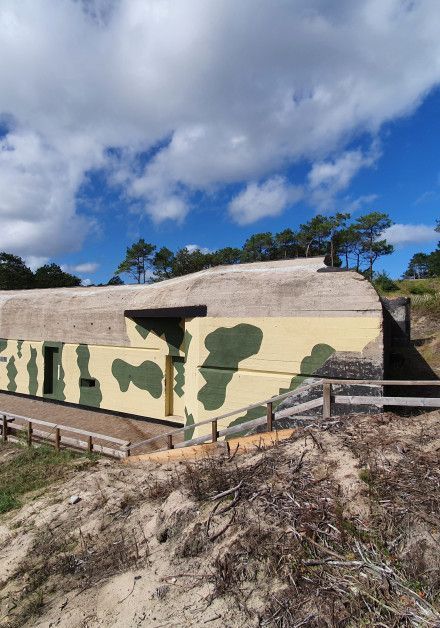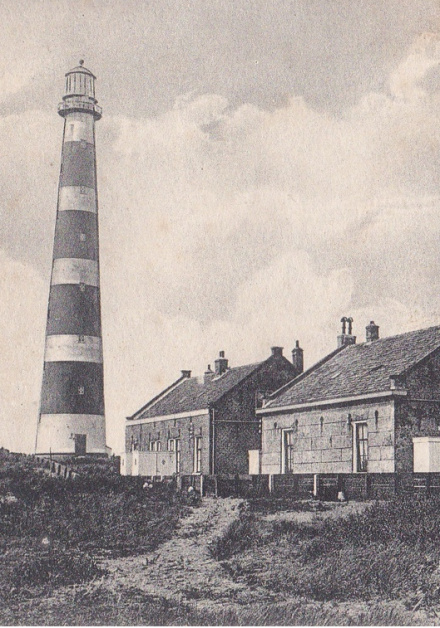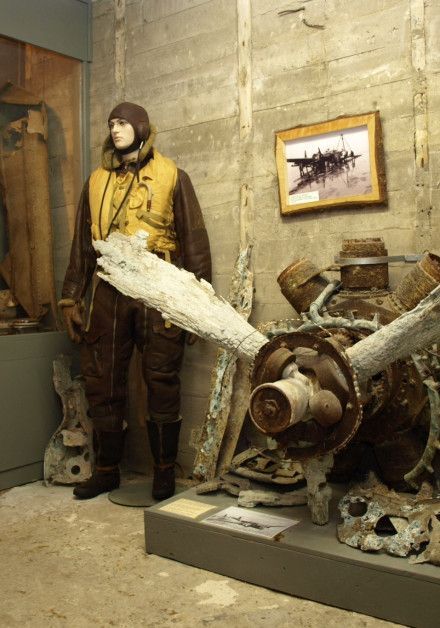
Discover the history of the Wadden
Discover the history of the Wadden!
The sea gives and the sea takes
For centuries, island communities have had to adapt to floods, storm surges and changing coastlines. Nature and especially the sea has played a huge role in the development of the islands. The sea has taken many lives. But nature and the sea also brought much to the islanders: beachcombing and seafaring provided income. This constant interaction between man and nature makes the islands unique!
History on the Wadden Islands is alive and well!
From brave whalers and tough beachcombers to ancient lighthouses and historic villages, each island tells its own unique story and is a treasure trove of valuable history, where history is on full display Did you know that some islands were once battlegrounds of European powers? Or that traditional customs, such as beachcombing, are still kept alive today?
Discover how the islands have been shaped by nature and culture over the centuries. Discover beautiful and often ancient stories and historical sites. Stroll past old churches, visit museums full of maritime treasures or be surprised by impressive stories from islanders.

The 1825 storm surge
It is 1825. A severe north-westerly storm sweeps across the Netherlands. Heavy rainfall and spring tides cause a frighteningly high water level and then it happens: holes appear in the dykes of the Zuiderzee in countless places and the dyke collapses. A disaster! Large parts of Friesland, Overijssel and the Wadden Islands flood...
-
Consequences for Terschelling
Terschelling's Wadden Sea dike, vulnerable for years due to lack of maintenance, did not hold. Both the outer and inner dike breached and the island was largely flooded. In villages like Midsland, residents sought safety on higher ground. Cattle were housed in churches and residents rescued each other with boats. Despite the chaos, the death toll on Terschelling remained limited, but the damage was enormous: farmland became saline, crops failed and many farmers lost their income...
-
Consequences on Ameland
On the Wadden island of Ameland, too, a powerful northwesterly storm struck in the morning on 3 February 1825, increasing in strength as the day progressed. By evening the water was already against the outer dunes and around seven o'clock in the evening the dikes broke. The waves in the Westermieden were so high that it looked as if the North Sea itself had taken over the land. The dykes of Hollum, Ballum, Nes and Buren were swept away in several places, creating deep current holes, sometimes up to four metres deep.
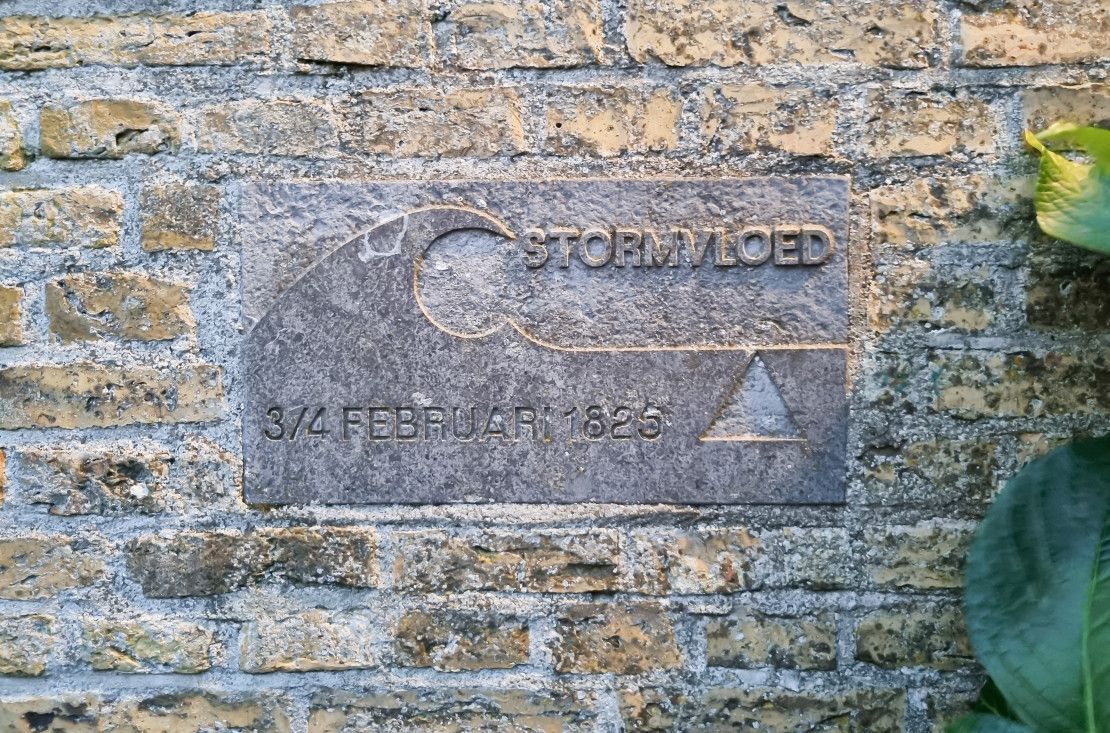
Monument Storm Surge Terschelling
In 1992, a monument was placed in Midsland to commemorate the disaster of the storm surge. A plaque shows how high the water was, as a silent warning of the power of nature. Between 1995 and 2001, the Wadden Sea dyke was reinforced.
The storm surge of 1825 reminds us of the eternal battle against the water. For Terschelling, it was a wake-up call that led to improved protection and a tangible awareness of the islanders' resilience.
80 years of liberation!
War and liberation on wadden island of Terschelling
On 16 May 1940, the occupation of Terschelling began when German quartermasters came ashore. The island, isolated in the Wadden Sea, soon became a strategic stronghold within the German Atlantic Wall. The Dutch flag on the Brandaris was replaced by the swastika, and Dutch soldiers were made prisoners of war.
Daily life changed drastically. Large parts of the island became barred areas, and residents' freedom of movement was restricted. Local men worked on bunkers. German soldiers stayed with families or in hotels. Despite initially friendly contact, tensions increased as the war progressed.
The war left deep marks. Battles in the air and at sea claimed many lives. One of the toughest moments was the crash of the Halifax DK203 in 1943. A total of 43 islanders lost their lives at sea, and wounded and casualties from both sides were brought to Terschelling.
Although the Netherlands was liberated on 5 May 1945, German troops remained on the island until 5 June. The war left lasting scars, but Terschelling recovered, with the Brandaris as a symbol of resilience.
Historical activities on the Wadden Sea
These historical activities will take you back in time! Take a historic village walk and discover all about the old days as you walk through centuries-old streets. Tour one of the many bunkers built on all the islands during World War II or visit the Cultural Crafts Day on Ameland and imagine yourself in the 19th century.

Cultural-historical village walk Schiermonnikoog
Be taken on a unique voyage of discovery through charming Schiermonnikoog with island guide Arend Maris. He brings the past and present of the island to life with wonderful stories and humorous anecdotes about ‘us Lytje Pôle’ and its inhabitants.
In about two hours, you will discover the rich history and special culture of this unique island, in a way you will not easily forget. Be surprised, amazed and above all inspired during this special walk!
-
Beachcombing on the Wadden Island of Terschelling
Beachcombing is in the Terschellinger's blood. In a heavy storm, people are quick to look at the beach. Throughout history, the sea brought a lot to the island. A source of stuff and tall tales.
Guusjen! That is the cry with which the islanders rush to the beach when a ship has run into heavy weather. To properly understand jut fever, you have to go back in history.
When the island had no tourism, people had to live off the land and seafaring. As soon as anything washed ashore - especially wood - people were on the lookout. Because that what construction material for houses and farms. Many shipwrecks have been turned into farms. The names of stranded ships can also be found all over the island.
-

Of course, beachcombing is still popular today. Beachcombing was and is done on foot, by bicycle, horse and carriage and now also with off-road vehicles. The latter still requires an exemption. Since the container disaster in 2019, it has become painfully clear that in addition to precious items, huge amounts of rubbish wash ashore. A new kind of beachcombing has already emerged some years ago: environmental beachcombing. That's cleaning up the beach together and making sure you leave the island even more beautiful.
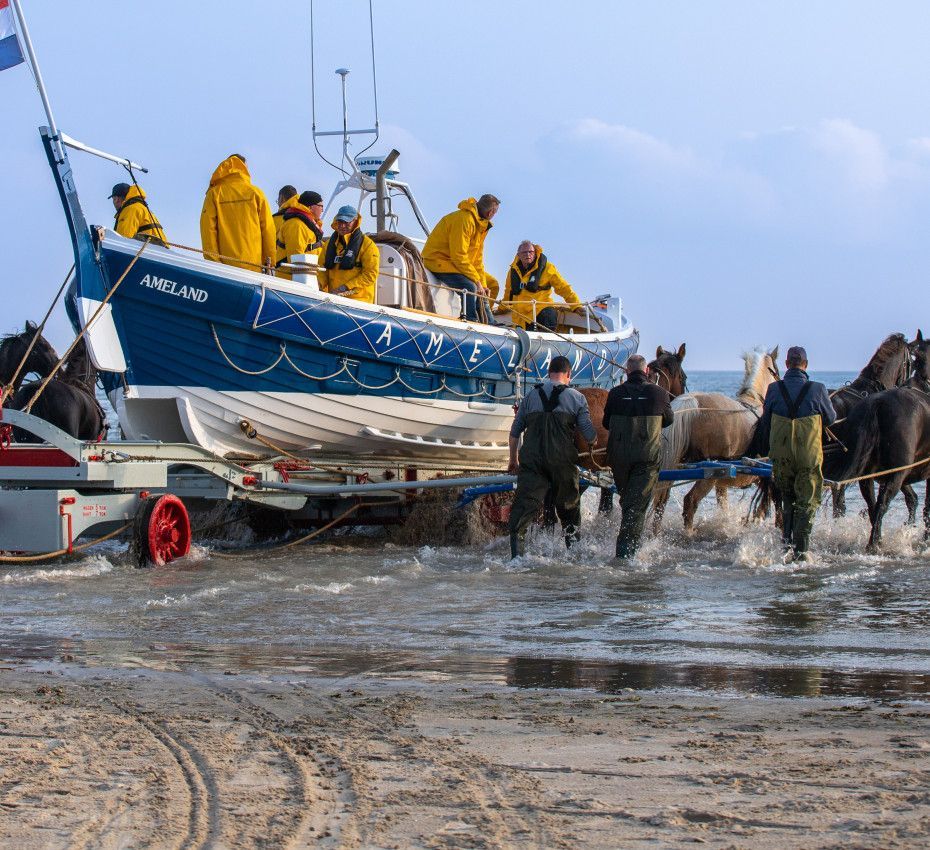
-
Demonstration horse rescue boat Ameland
There is a ship in distress! The crew is in danger of drowning. On Ameland, the distress signals are seen and farmer and horse rush to the rescue station where the horses are harnessed for the lifeboat...
This way of rescue can still be seen in Hollum on Ameland!
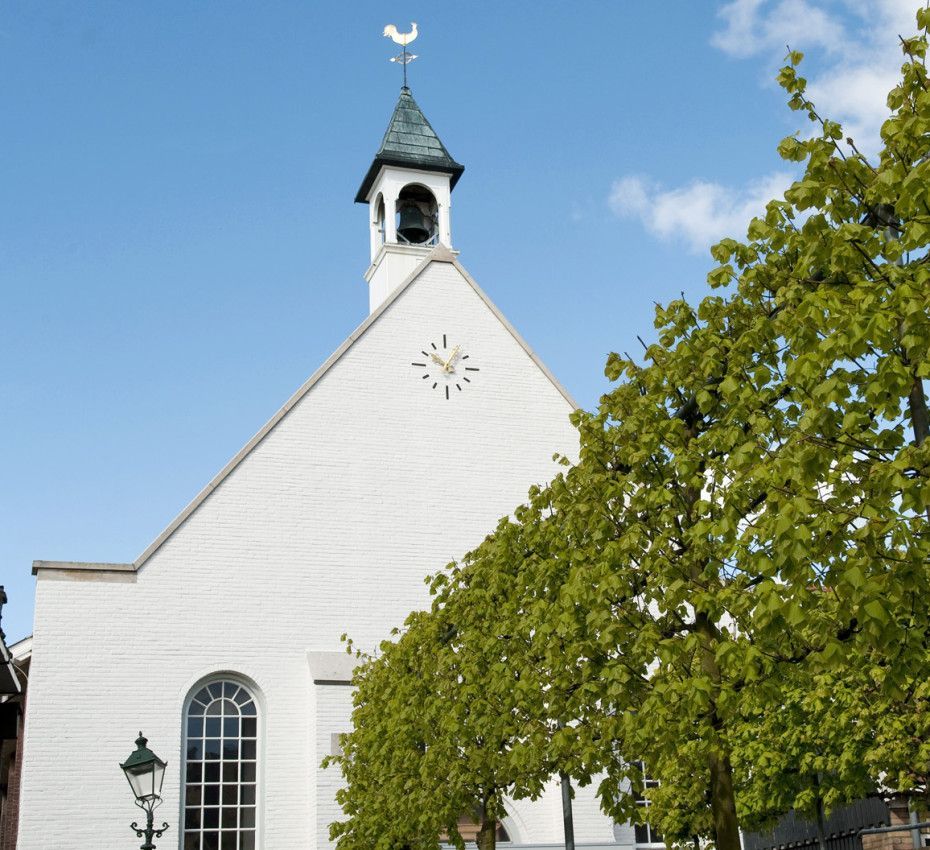
-
Historic walk West-Terschelling
During the historical walk, guide Cor tells anecdotes about Het Wakend Oog, the Brandaris, the old cemetery, commander's houses, Westerkerk and the Mennonite church (Vermaning). Also told during this 2 km walk are the great fire of 1666, beaching, rescues and salvages, beachcombing and beach vice, the sinking of the gold ship Lutine, among others. Not forgetting the unctuous and powerful stories!
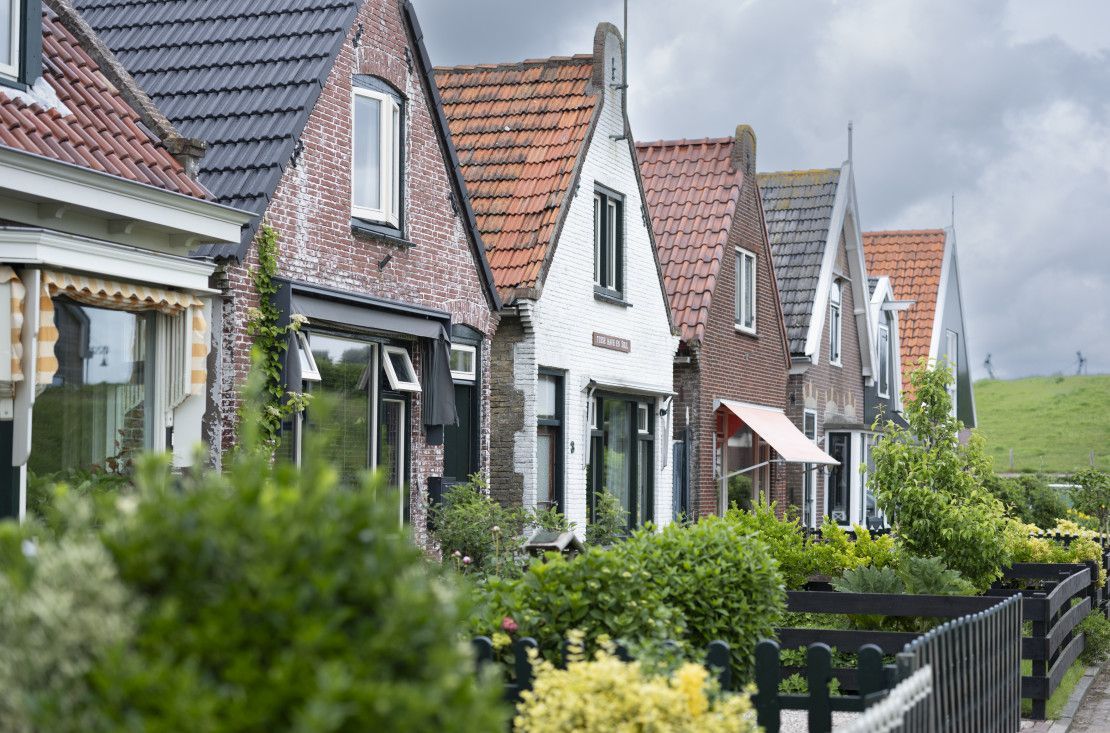
Historical walks on Texel
Step back in time and discover the fascinating history of Texel with The Historical Walks. Explore atmospheric villages such as Den Burg and Oudeschild, where centuries-old stories lie hidden. Walk past the Georgian cemetery and dive into the impressive story of the Georgian Revolt or visit the old fishing village of Oosterend, once an important centre of whaling.
The walking routes combine Texel's unique nature with stories about the influence of the VOC, maritime history and the daily lives of islanders through the ages. A special way to discover Texel!
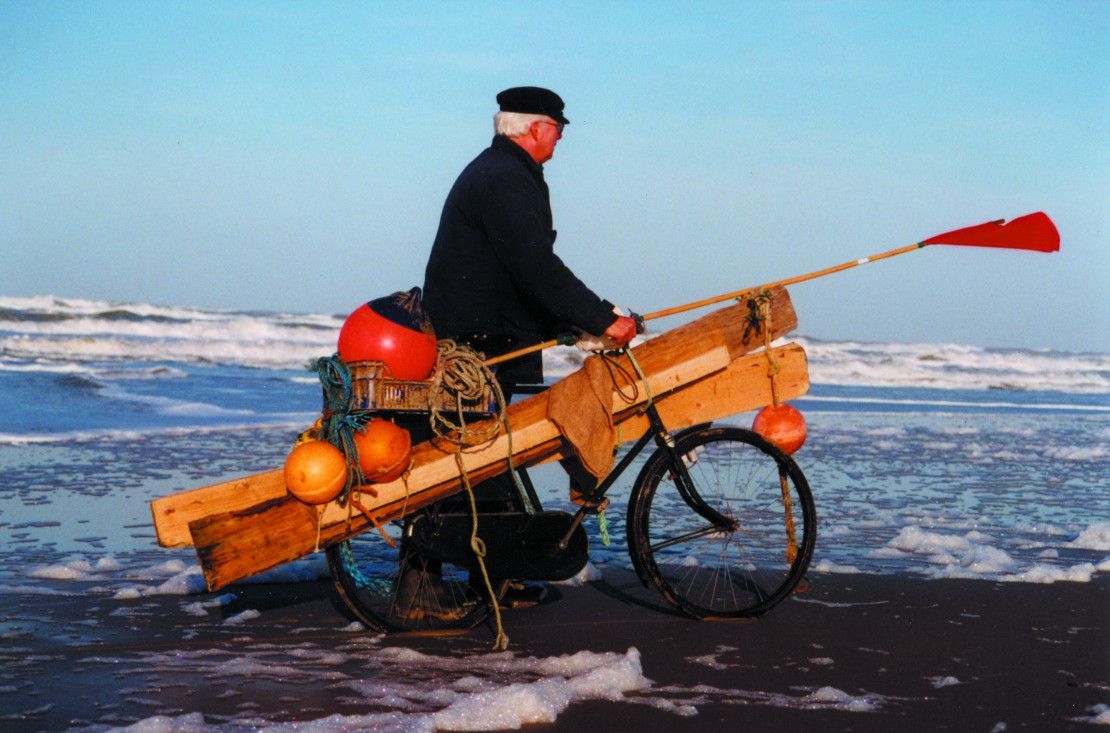
Beachcombing on Texel
Texel and beachcombing are inextricably linked. For centuries, unusual finds have washed ashore, collected by beachcombers through all kinds of weather. In Maritime and Beachcomber's Museum Flora, you can dive into this fascinating tradition. Admire the treasures that beachcombers have collected over the past 75 years and discover the stories behind these unique finds. According to the beachcombers of Texel, Flora is the first and largest beachcomber museum in the world!
Do you really want to experience the beachcomber feeling? Then stay at Hotel De Waal, run by a real beachcomber family. Here you will experience the stories and tradition up close. Combine your stay with a visit to the beachcombers' museum and discover how beachcombing is an indispensable part of Texel's identity.
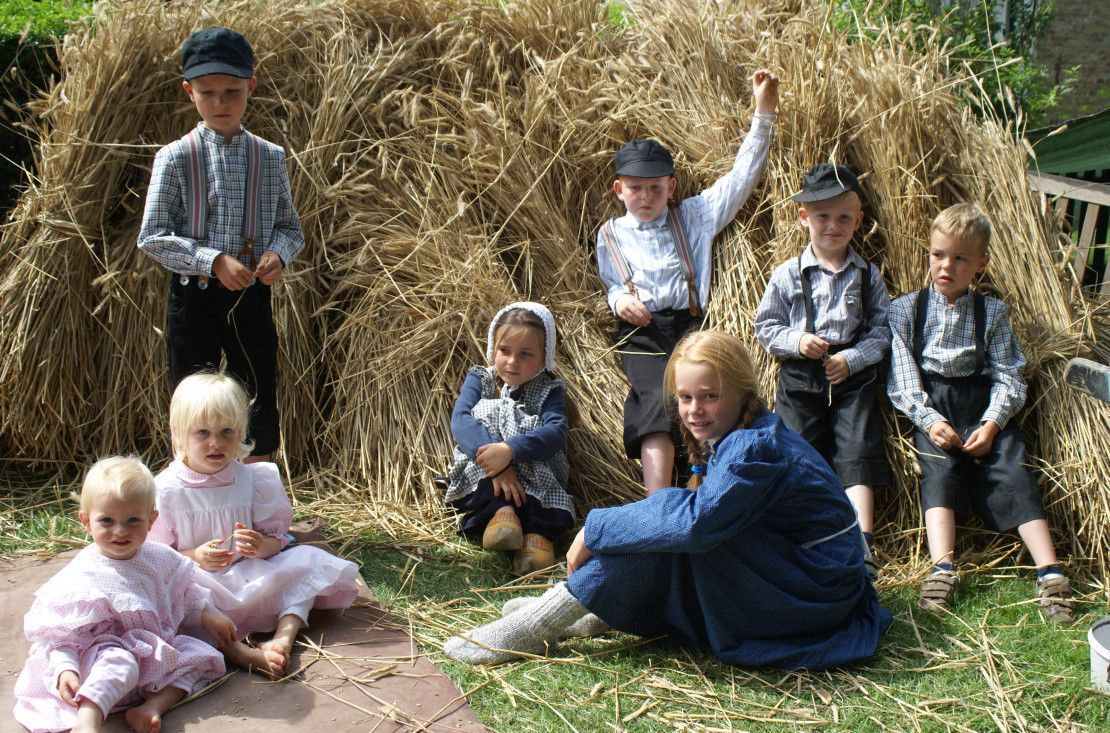
Cultural Crafts Day Ameland
On the wadden island of Ameland in the historic village of Ballum, you can completely immerse yourself in the atmosphere of yesteryear one day a year. The day starts with a parade of horses, all kinds of old agricultural tools and people in traditional costumes. Residents will give demonstrations of past activities such as hat-tossing, washing, blacksmithing, wood-turning and much more.
Feeling hungry or thirsty? Then choose a hot waffle, a cone of old Dutch sweets or settle down on one of the cosy terraces.
Historic sites on the Wadden Sea
Tragic events, special and beautiful. Stand at the place where it all happened, feel the atmosphere, hear the sounds and experience it all. Visit these impressive historisceh locations on the Wadden.

VOC and the Texel Roads
In the Golden Age, the Texel Roads was a crucial anchorage for ships of the Dutch East India Company (VOC). Here, ships prepared for their distant voyages to the East and South America. The maritime history of this special part of Texel comes to life in museum Kaap Skil. The huge model of the Texel Roads brings the VOC era to life.
A visit to Kaap Skil also offers a unique insight into daily life at that time. Discover unique finds from shipwrecks, listen to the stories of sailors and traders, and experience Texel as an important starting point for world trade.
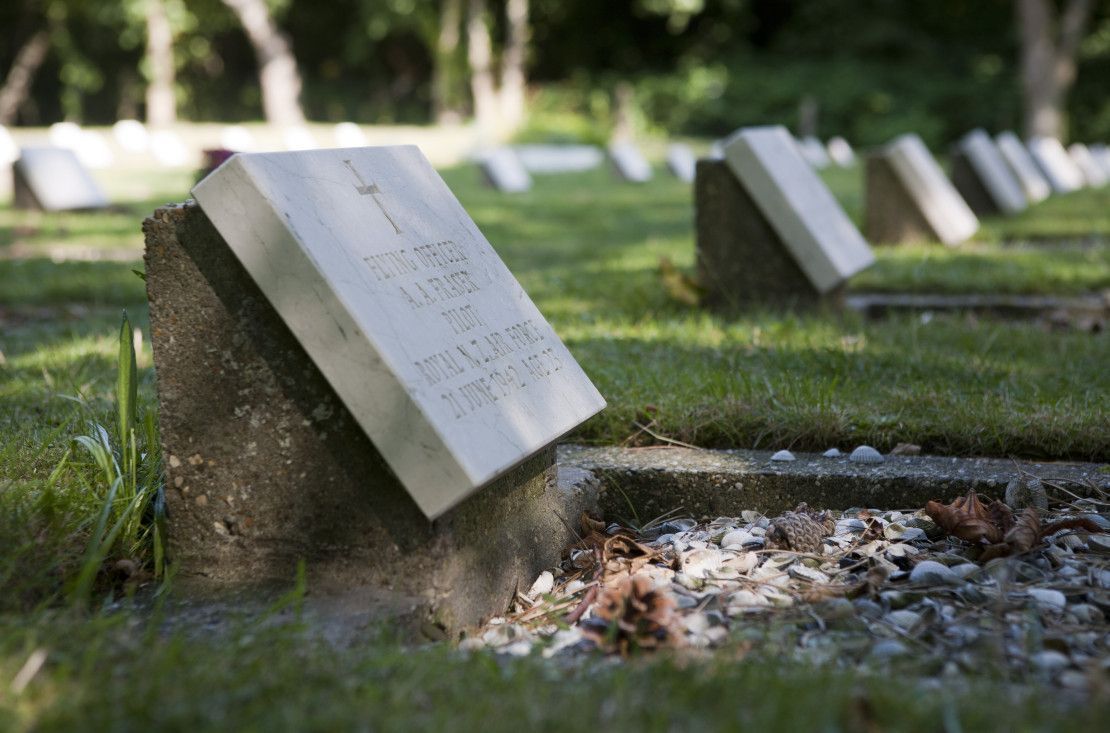
Drowning cemetery 'Vredenhof' Schiermonnikoog
Deeply hidden in the picturesque dunes on Oude Reddingsweg on the Wadden island of Schiermonnikoog is the impressive Drenkelingenkerkhof Vredenhof. This serene spot houses the last resting places of mainly young soldiers of various nationalities, who all share one tragic similarity: they met their end during the First and Second World War and washed ashore on this island.
Each grave tells a story of courage, sacrifice and loss.
-
The drowning cottage Terschelling
On the vast Boschplaat beach, near the eastern tip of Terschelling, stands a unique piece of history: the Drenkelingenhuisje. The cottage tells the story of the shipwrecks that once plagued the island.
The original cottage served as an emergency facility for survivors of shipwrecks. It stood on four stilts, a recognisable beacon on Boschplaat where most shipwrecks occurred. It was an essential facility for drowning people to survive the first hours after a disaster.
Unfortunately, the cottage was badly damaged in 1953 and was in danger of being lost. The tourist office of the time, saw the importance of the building and bought it for 1 guilder. After a thorough renovation, the storm of 16 February 1962 finally put an end to it: the cottage disappeared in the waves.
-

In 2000, the drowning cottage was rebuilt and can be visited all year round since then. You can get there by beach bus, a covered wagon ride or by bike along the dunes. For the truly adventurous, hiking is a wonderful option, but don't forget that you have to return too! In winter, there are additional options, such as a beach taxi or a beach driving excursion.

Commander's houses Ameland
In the 17th and 18th centuries, brave sailors risked their lives on the rough North Sea and in the icy waters of the far north. And with success! The whaling industry of the time brought them and the people of Ameland considerable wealth.
Commanders built their houses thanks to this prosperous whaling. You can still admire them in the villages of Hollum, Ballum and Nes. Walking through the old streets, you will see the richly decorated facades and sturdy doors that recall adventures at sea.
In museum Sorgdrager, you can learn all about this adventurous history and about Hidde Dirks Kat, a famous Amelander seafarer.
Did you know...
The islands are brimming with history. Each island has several interesting facts. You will find it here!
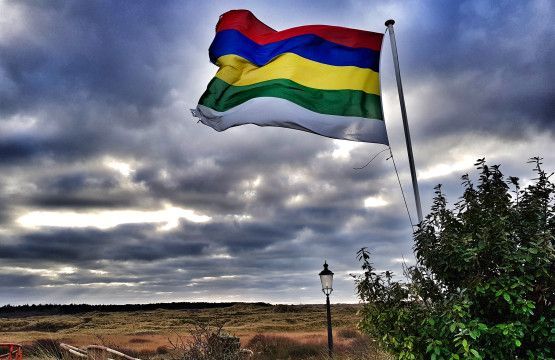
The Terschelling flag
‘Red are the clouds, blue is the sky. Yellow are the culms, green is the grass, white is the sand. These are the colours of Schellingerland.’ This poetic tribute reflects the elements that make Terschelling so unique: the dramatic skies, vast beaches and vibrant dune landscapes.
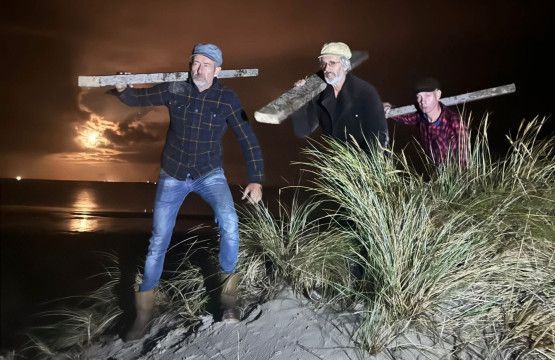
The Amelander Coat of Arms
A hard necessity, that was beachcombing in the old days. And that is how Ameland got its coat of arms: Long ago, when Amelanders depended on what the sea brought, Terschelling wood thieves stole wood from Amelander beaches, until three Amelander beachcombers intervened. In an overnight trip, they brought back three beams.

1666 and the Stryper Wyfke
2016 marked 350 years since the English Furie destroyed more than 150 merchant ships off the coast of Vlieland, killing some 2,000 sailors. A day later, during the Second Anglo-Dutch War, English admiral Robert Holmes changed tactics and the village of West-Terschelling was burnt to the ground. after the burning, the English continued across the island to the east. In the smoke and fog, they saw the burial mound with a few tombstones in the distance. A nearby female, known as the Stryper Wyfke, made the statement, ‘They stand there by hundreds, but lie there by thousands’, referring to the graves. The English thought there was an enemy army ready and turned right around. The Stryper Wyfke thus saved eastern Terschelling from looting and burning. Later, a statue of the Stryper wyfke was placed on the main road across Terschelling.
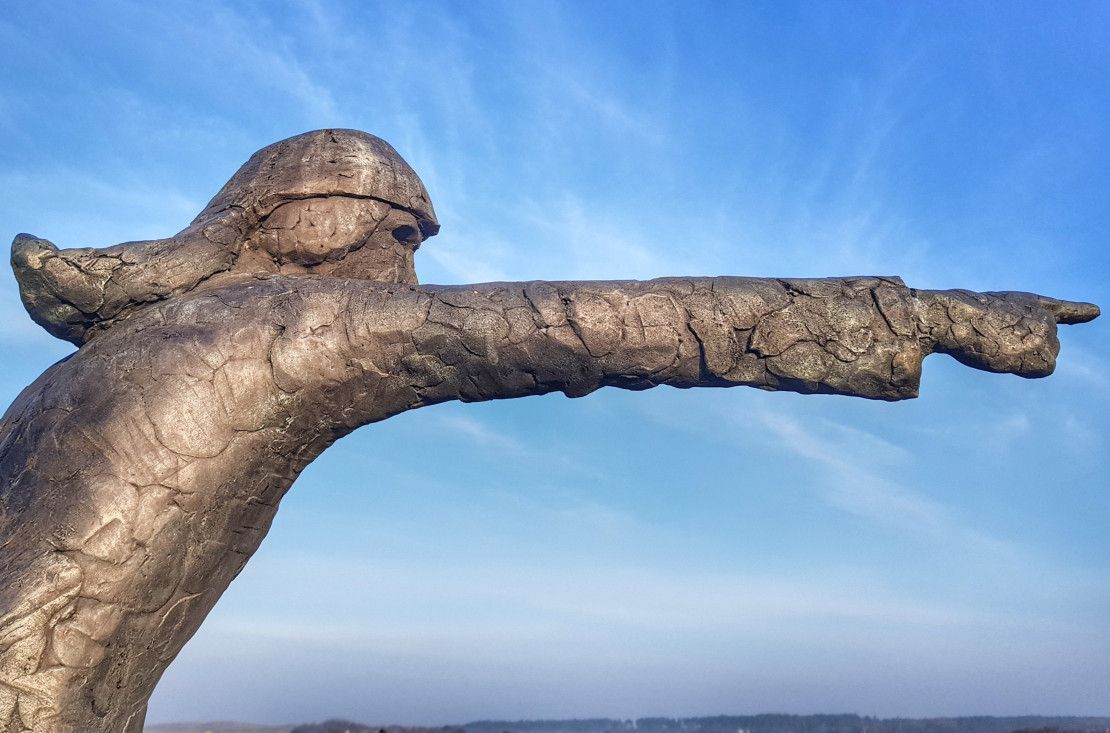
Striep refers to a very old settlement that lay just west of the present hamlet. A remnant of this is the Strieperkerkhof, located southwest of Midsland. Research has shown that a wooden church stood on the Strieperkerkhof around the year 850. The oldest remains of habitation on the island of Terschelling were found on the Strieperkerkhof. A stone church was later built on the churchyard, St Martin's Church, which was set on fire by the Sea Beggars in 1569. The tower collapsed in 1603. Since then, the Strieper churchyard has been a burial mound in which burials continued until 1916.
Meer geschiedenis graag!
Can't get enough of historical facts, stories about the past or beautiful historical sights? Then dive into history island by island and discover it all!

